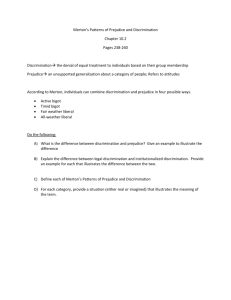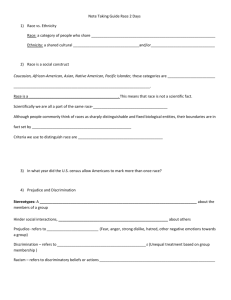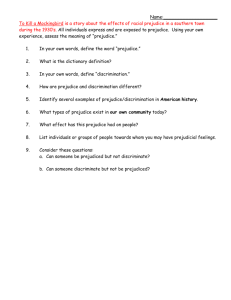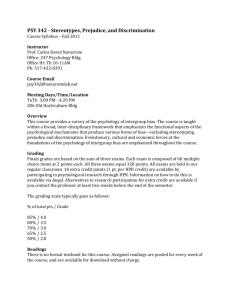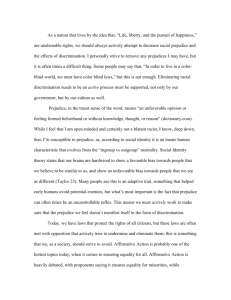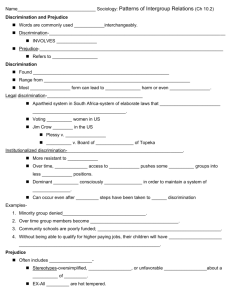Lesson 4
advertisement
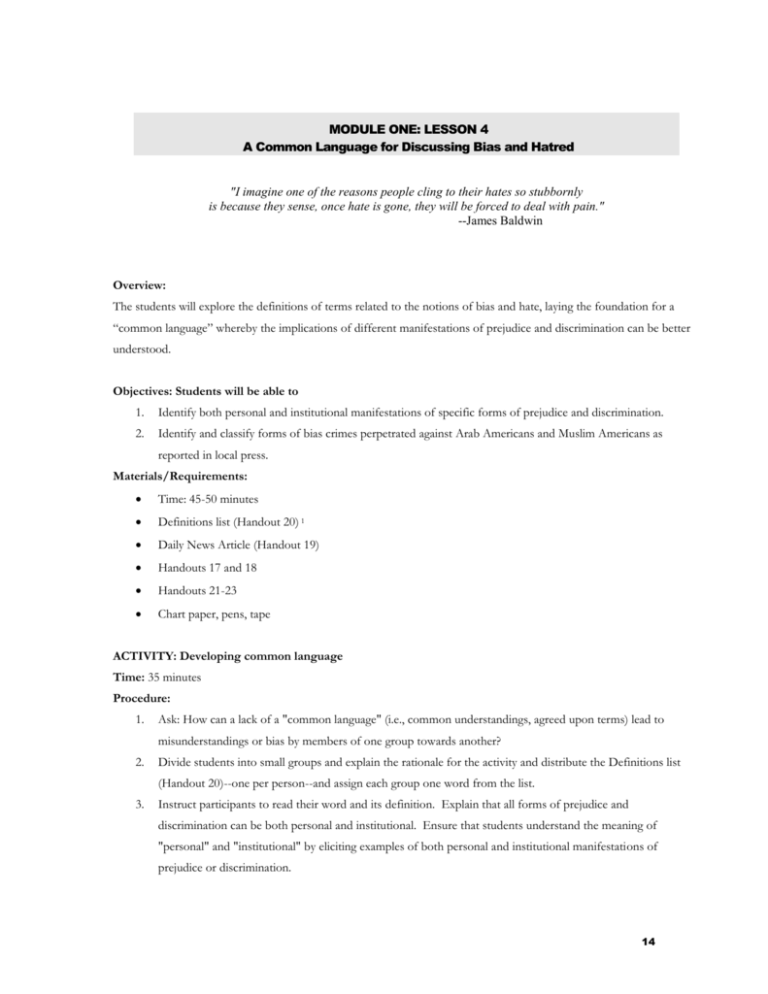
MODULE ONE: LESSON 4 A Common Language for Discussing Bias and Hatred "I imagine one of the reasons people cling to their hates so stubbornly is because they sense, once hate is gone, they will be forced to deal with pain." --James Baldwin Overview: The students will explore the definitions of terms related to the notions of bias and hate, laying the foundation for a “common language” whereby the implications of different manifestations of prejudice and discrimination can be better understood. Objectives: Students will be able to 1. Identify both personal and institutional manifestations of specific forms of prejudice and discrimination. 2. Identify and classify forms of bias crimes perpetrated against Arab Americans and Muslim Americans as reported in local press. Materials/Requirements: Time: 45-50 minutes Definitions list (Handout 20) 1 Daily News Article (Handout 19) Handouts 17 and 18 Handouts 21-23 Chart paper, pens, tape ACTIVITY: Developing common language Time: 35 minutes Procedure: 1. Ask: How can a lack of a "common language" (i.e., common understandings, agreed upon terms) lead to misunderstandings or bias by members of one group towards another? 2. Divide students into small groups and explain the rationale for the activity and distribute the Definitions list (Handout 20)--one per person--and assign each group one word from the list. 3. Instruct participants to read their word and its definition. Explain that all forms of prejudice and discrimination can be both personal and institutional. Ensure that students understand the meaning of "personal" and "institutional" by eliciting examples of both personal and institutional manifestations of prejudice or discrimination. 14 4. Tell students to discuss their word and to identify both personal and institutional manifestations of prejudice or discrimination. 5. Allow about 15 minutes for this analysis and discussion. One person in each group records ideas on chart paper. 6. Instruct each group to present its findings to the class, allowing time for other students to add comments or questions. 7. Pass out to everyone the Daily News Article, “Muslims Feel Twice Victims of Terror: Bias’ Sting Felt Citywide” (Handout 19). Students skim article, adding notes to their charts. (Students can also refer to Handouts 17 and 18 from the homework assignment in Lesson 3.) 8. Lead a full group discussion using these suggested questions: a) Did you learn anything you didn't know during the small-group discussion? In the whole group discussion? b) Are there some forms of prejudice or discrimination that receive more attention than others? Why do you think that occurs? c) How does having a "common language" about prejudice and discrimination help to deal with ethnic and religious intolerance? d) What are some ways you or others could help diminish or prevent manifestations of prejudice and discrimination? What would be the benefits of doing so? 9. Post the sheets of paper in the room for later use and as a reminder that these issues are real and present every day. HOMEWORK: Teacher provides students reading selections, Handouts 21, 22, and 23, which examine the public debate over whether the civil rights of some people are being infringed in the wake of the terrorist attacks of 9/11. Focus Question: What specific civil rights question has become hot-button issue since 9/11? (Intended answer: the constitutionality of selective profiling that targets Arabs and Muslims in the United States.) 15


